Will Nassar Propose to Syahrini's Sister-in-Law? Confirms He Wants to Get Married Next Year
Nassar is asking for prayers so that next year he can propose to his beloved. When asked if that is Lala, Nassar said this..
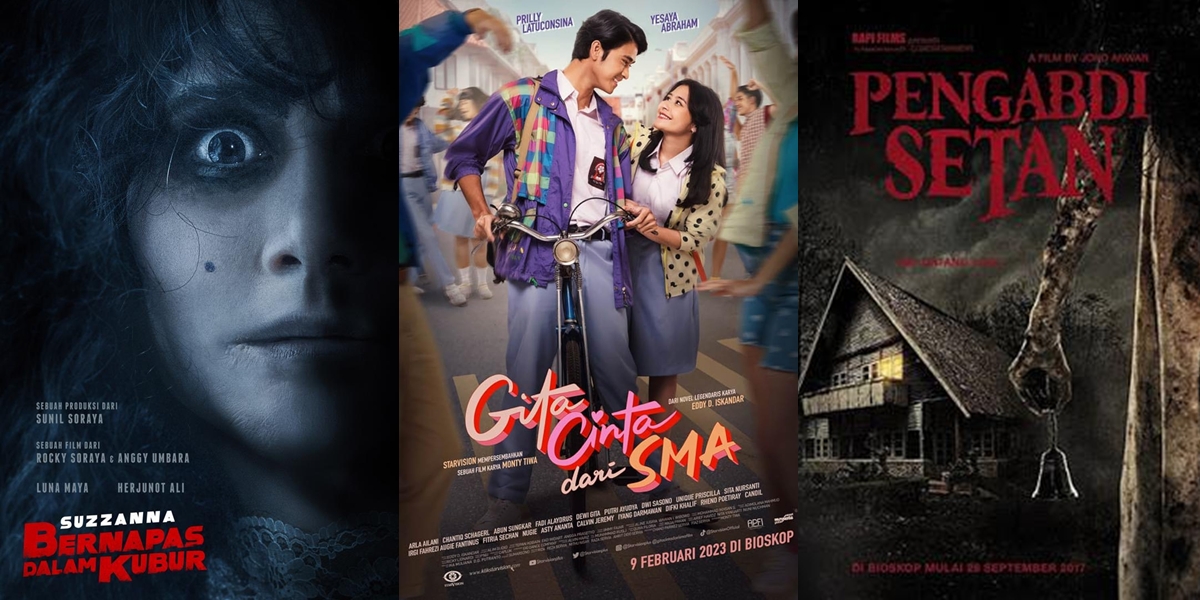
Kapanlagi.com - The variety of Indonesian films is increasing and is not limited to just one genre. In addition to novel adaptations, 'remake' films are also coloring the cinemas of the homeland. Starting from PENGABDI SETAN to CATATAN SI BOY. Interestingly, some remake films have achieved remarkable success, while others have failed in the market. Let's take a closer look!
The film PENGABDI SETAN (Satan's Slaves) from 1980 and the 2017 version are two Indonesian horror works that share a similar storyline but approach it very differently. The 1980 version was directed by Sisworo Gautama Putra and tells the story of a wealthy family far removed from religious values.
After their mother passes away, the family begins to experience terror from supernatural beings due to the mother's involvement in black magic. This story emphasizes the importance of returning to religious teachings as protection from evil forces.
Meanwhile, the 2017 version of PENGABDI SETAN, directed by Joko Anwar, is a reimagining of the original film set in 1981. The story focuses on a poor family that slowly uncovers that their mother was once a member of a satanic cult. After her death, a series of mysterious events and the emergence of a deviant sect begin to haunt the family.
In terms of cast, the 1980 version features HIM Damsyik, Fachrul Rozy, and Ruth Pelupessy, while the 2017 version stars Bront Palarae, Tara Basro, and Ayu Laksmi.
Significant differences are also seen in the main characters: in the older version, the boy character is central, while in the modern version, he is replaced by a girl character named Rini.
In terms of achievements, PENGABDI SETAN (1980) does not have precise audience data due to the limitations of documentation systems at the time, but this film is widely known as a legendary horror film and has become a cult classic that greatly influenced the Indonesian horror genre.
Meanwhile, the 2017 version achieved great commercial success with over 4.2 million viewers in theaters and became one of the highest-grossing horror films in Indonesia. This film also received numerous awards, including Best Child Actor, Best Cinematography, and Best Art Direction at the 2017 Indonesian Film Festival, as well as recognition at international film festivals.
Overall, PENGABDI SETAN (1980) is a pioneer of local horror with a strong religious tone and a classic approach, while PENGABDI SETAN (2017) represents the revival of the Indonesian horror genre in a modern form, technically mature, and globally recognized in its achievements. Both play important roles in the history of Indonesian horror cinema, but with different approaches and impacts according to their times.
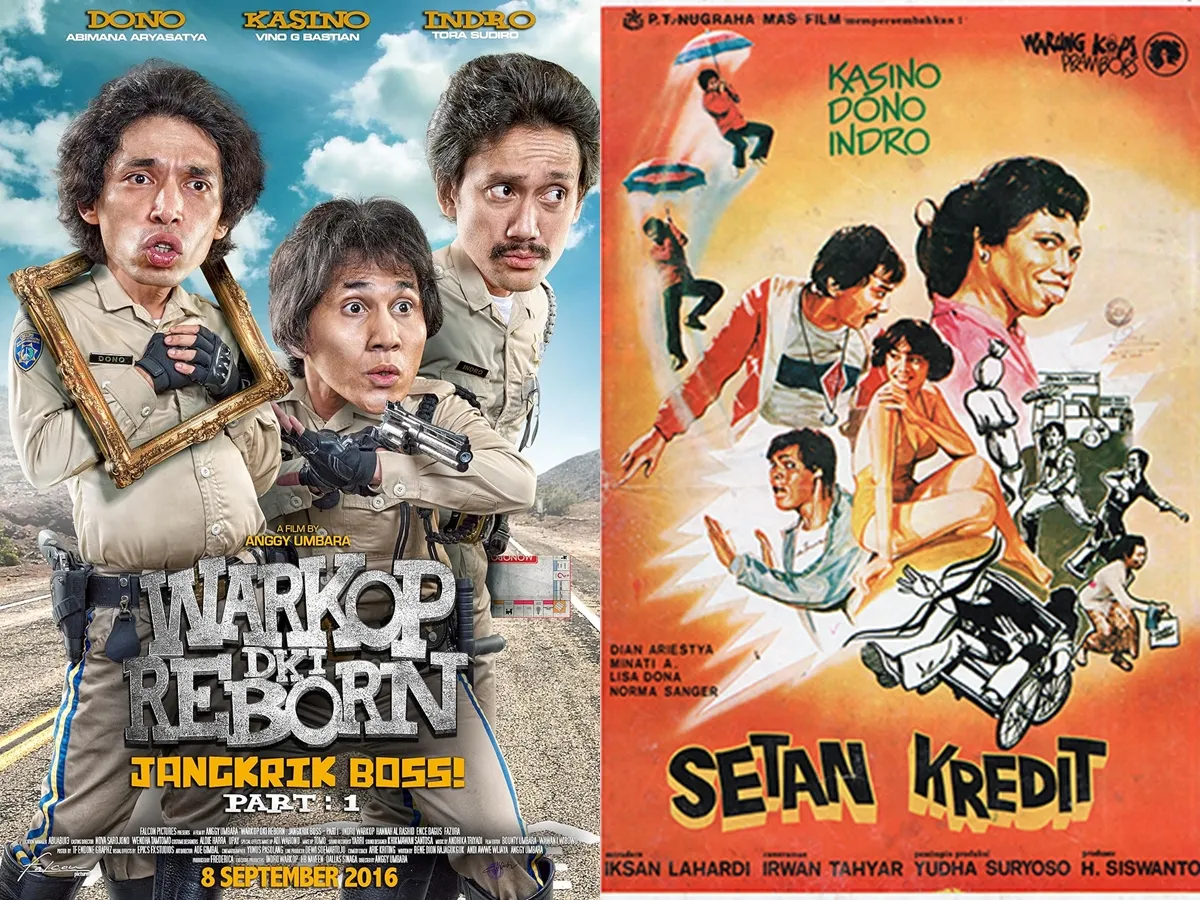
Indonesian Film Remake (Credit: IMDB)
The Warkop DKI films from the 1980s to 1990s are an important part of Indonesian comedy history. Starring the legendary trio Dono, Kasino, and Indro, these films usually feature light stories set against everyday life, spiced with slapstick comedy, social satire, and subtle critiques of societal issues.
Titles like Mana Tahaaan..., Gengsi Dong, Maju Kena Mundur Kena, and Setan Kredit became popular across generations. The stories in these films tend to be episodic and not overly focused on complex plots, but rather rely on character strength, situational humor, and the natural chemistry of the trio.
In contrast, WARKOP DKI REBORN, which began airing in 2016 and directed by Anggy Umbara, is a modern reboot of the Warkop DKI legacy. This film does not directly lift old stories, but instead adapts and repackages the humor style of the Warkop trio with modern technology, visual effects, and a more grand cinematic setting.
The humor presented tends to be more visual and physical, aimed at today’s audience. The first series takes inspiration from several classic Warkop films but is developed in a more contemporary style.
In terms of cast, the classic era of Warkop DKI featured Dono, Kasino, and Indro as true icons that are hard to replace. Their chemistry was very strong and became the main strength of those films. Meanwhile, in WARKOP DKI REBORN, the role of Dono is played by Abimana Aryasatya, Kasino by Vino G.
Bastian and Indro by Tora Sudiro (in the first two films).Interestingly, the original Indro was also involved as a producer and creative supervisor in the Reborn version, keeping the original spirit alive. In the sequels (WARKOP DKI REBORN 3 and 4), the roles were taken over by Aliando Syarief, Adipati Dolken, and Randy Danistha.
In terms of audience numbers, the classic Warkop DKI films do not have official box office data because, at that time, there was no standardized reporting system for viewers. However, their popularity can be seen from the large number of films (more than 30 titles in one decade), their frequent reruns on television, and the cultural influence that is still felt today.
On the other hand, WARKOP DKI REBORN: Jangkrik Boss! Part 1 (2016) set an extraordinary record with 6.8 million viewers, making it the highest-grossing Indonesian film of all time at that point. Its sequel, Part 2 (2017), was also successful with 4 million viewers. Although the subsequent two films were not as successful as their predecessor, this reboot still managed to revive the Warkop legacy for a new generation.
In terms of awards, the old Warkop DKI films were more loved by the public than formally recognized in award events. The focus was on popular entertainment, and they rarely received nominations at national film festivals. On the other hand, WARKOP DKI REBORN has received several awards and nominations, especially in the comedy film and box office categories, including at the Indonesian Box Office Movie Awards (IBOMA) and the Indonesian Choice Awards.
Overall, the Warkop DKI era of 1980–1990 is a symbol of the glory of Indonesian comedy with its simple approach and strong characters. Meanwhile, WARKOP DKI REBORN has successfully revived the spirit of the legendary trio in a more modern and cinematic format, achieving spectacular audience and production results.
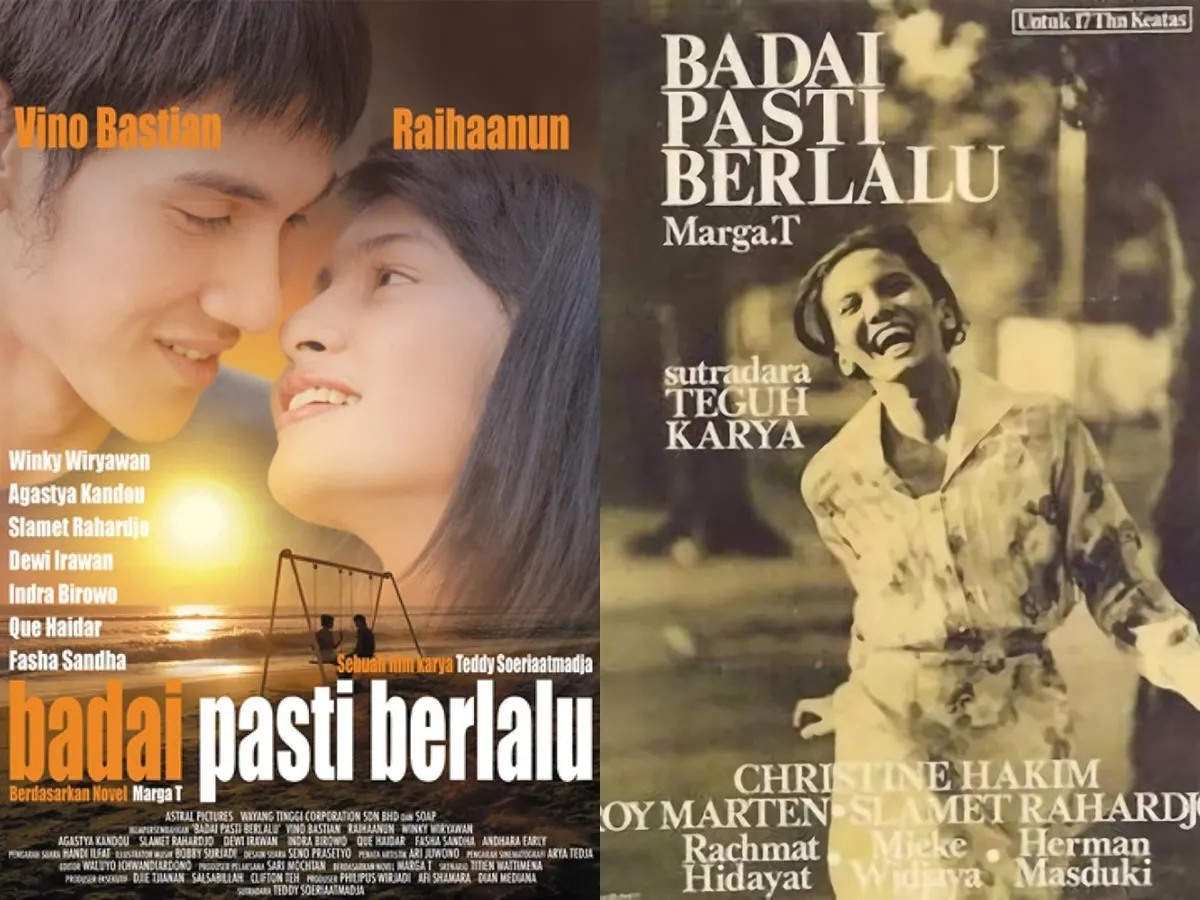
Indonesian Film Remake (Credit: IMDB)
The film BADAI PASTI BERLALU is one of the iconic works in Indonesian cinema that has been adapted to the big screen twice: first in 1977 by Teguh Karya, and then in 2007 by Teddy Soeriaatmadja. Although both versions highlight the same core story, which is a love triangle filled with pain and betrayal, the storytelling approach, visual style, and social context are very different.
The 1977 version tells the story of Siska, a young woman who is heartbroken and then arranged to marry a man named Helmi by her mother. In the midst of an unhealthy relationship with Helmi, Siska meets Leo, a gentle man who sincerely loves her. The deep emotional conflict and the social nuances characteristic of Jakarta in the 70s become the strengths of this version's story.
Meanwhile, the 2007 version retells the same story in a more modern context, adjusting to the lifestyle and relationships of today's youth. Although the basic story remains faithful to its original source—the novel by Marga T—the new version is more contemporary in style and more explorative in its visuals and emotional approach to characters.
In terms of the cast, the 1977 version starred Christine Hakim (as Siska), Roy Marten (as Leo), and Slamet Rahardjo (as Helmi). All three were top actors of that era and delivered very strong performances, making this film regarded as one of the highest achievements in Indonesian drama cinema.
Meanwhile, in the 2007 version, the role of Siska is played by Raihaanun, Leo by Vino G. Bastian, and Helmi by Winky Wiryawan. All three represent a new face of Indonesian cinema and present a younger and more emotional interpretation of characters, in line with the times.
In terms of achievements, the 1977 version of BADAI PASTI BERLALU made significant critical accomplishments. This film won 4 Citra Awards at the 1978 Indonesian Film Festival in the categories of Best Cinematography (Lukman Hakim Nain), Best Editing (Tantra Surjadi), Best Sound (Suparman Sidik), and Best Music (Erros Djarot). In contrast, the 2007 version did not record a notable audience number, with only 117,982 viewers.
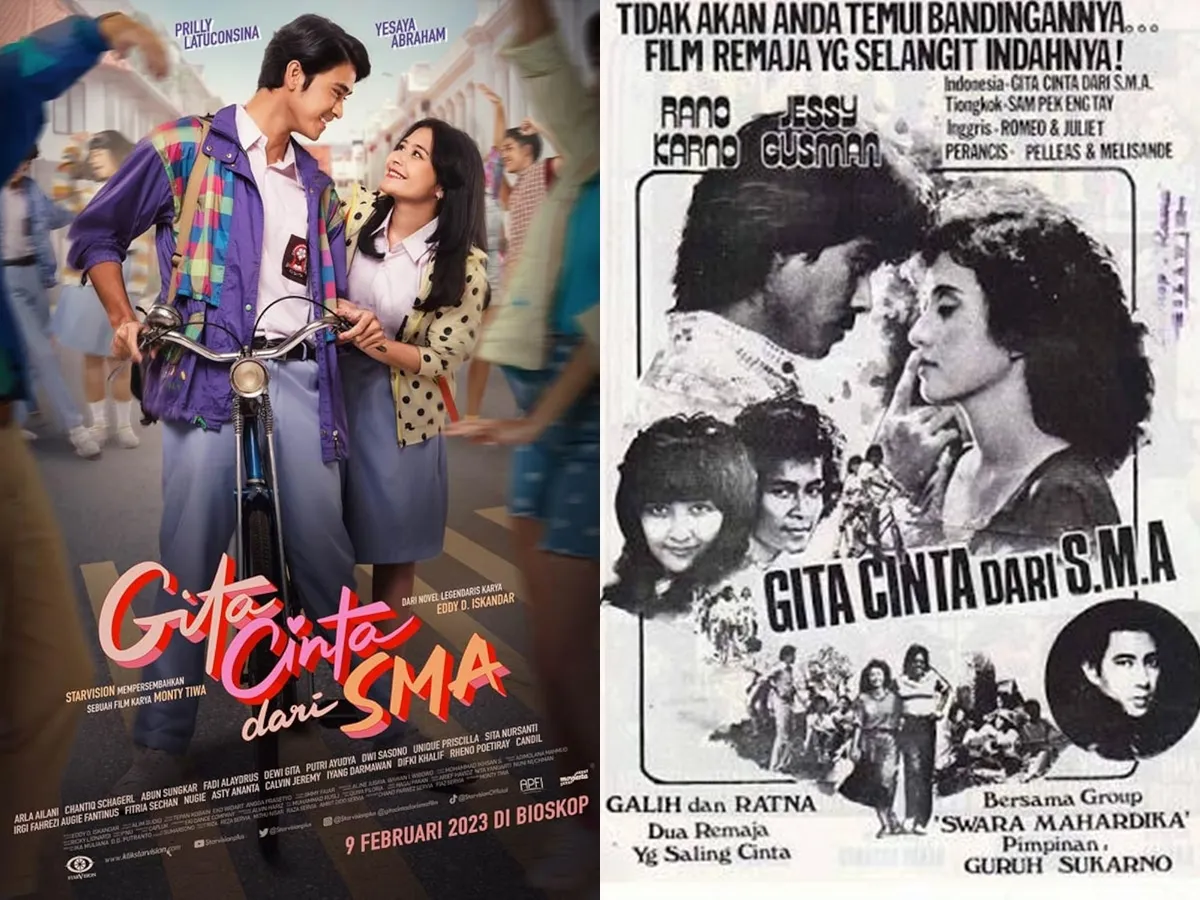
Indonesian Film Remake (Credit: IMDB)
The film GITA CINTA DARI SMA is one of the most iconic teenage love stories in Indonesia, which has been adapted to the big screen twice, in 1979 and 2023. Both versions tell the story of a sincere high school love that is hindered by parental approval, but each presents a different approach, storytelling style, and context of its time.
The 1979 version was directed by Arizal and adapted from a novel by Eddy D. Iskandar. The story centers on the love affair between Galih, a calm and accomplished student, and Ratna, a beautiful and intelligent student from a prestigious family. Their relationship faces opposition from Ratna's authoritarian father. This film depicts the classic conflict between love and parental approval, wrapped in the atmosphere of high school and the simple, romantic teenage vibe of the 70s.
In contrast, the 2023 version is directed by Monty Tiwa and remains faithful to the original story, but with visual adjustments, dialogue, and the dynamics of today's teenage relationships. This latest version enriches the narrative with elements of nostalgia while still targeting the modern young generation.
In terms of cast, the 1979 version starred Rano Karno as Galih and Yessi Gusman as Ratna. Their chemistry is very strong and they became icons of the teenage couple of that era, even giving birth to a cultural pop phenomenon of its own. The song by Galih and Ratna, created by Guruh Soekarnoputra, which became the soundtrack of the film, remains etched in the public's memory.
Meanwhile, the 2023 version features Yesaya Abraham as Galih and Prilly Latuconsina as Ratna. Prilly, who is also a producer, adds a new dimension to the character of Ratna, making her more assertive and expressive. This version also showcases several senior actors like Dwi Sasono and Unique Priscilla, and brings back Rano Karno as a tribute to the original version.
In terms of achievements, the 1979 version became the most successful teen film of its time, watched by millions before the official box office system was recorded. The film also received awards and widespread acclaim for successfully elevating the theme of teenage love in a poetic and touching manner. The theme song itself became an important part of the history of Indonesian pop music.
The 2023 version successfully captured attention, especially due to the nostalgia factor and the presence of Prilly Latuconsina as a major star. The film was watched by over 700 thousand viewers in theaters and became a hot topic on social media. Although it does not match the cultural impact of the original version, this film still receives appreciation for its neat production and efforts to revive this classic story.

Indonesian Film Remake (Credit: IMDB)
The horror films starring Suzanna in the 1970s and 1980s became a significant milestone in the history of Indonesian horror cinema. She is known as the "Queen of Indonesian Horror" thanks to her roles in various mystical and supernatural films such as Beranak dalam Kubur (1971), Sundel Bolong (1981), Malam Satu Suro (1988), Nyi Blorong (1981), and many more.
These films are synonymous with stories rich in Javanese mystical elements, revenge from the spirit world, and female characters who are victims of injustice that then rise from the grave. The narratives tend to be straightforward, utilizing practical effects, a chilling atmosphere, and cultural and spiritual values that are characteristic of Indonesia.
Meanwhile, the film SUZZANNA: BERNAPAS DALAM KUBUR (2018) is a modern tribute project directed by Rocky Soraya and Anggy Umbara. This film attempts to capture the essence of Suzanna's classic horror films while wrapping it in contemporary production and cinematic techniques.
The story revolves around Suzzanna, a pregnant woman who is murdered by a group of men who want to steal her wealth. She then rises from the dead to seek revenge. This plot closely resembles the horror style of Suzanna's earlier films, but is packaged with more modern visual effects and a more polished cinematic narrative.
In terms of cast, the 70s and 80s era was certainly dominated by Suzanna herself, who, with her characteristic pale face, sharp gaze, and eerie walking style, created an irreplaceable horror character. She often starred alongside actors like Barry Prima, Clift Sangra, and Dorman Borisman.
In the 2018 version, the role of Suzanna is played by Luna Maya, who, through prosthetics and makeup, is made to resemble the legendary actress very closely. Luna Maya's appearance in this film has garnered much praise for successfully reviving the character of Suzanna convincingly on the big screen.
Commercially, Suzanna's films in the past were very popular in cinemas of their time, even though there was no strict national box office recording system. Her films were often screened repeatedly and became a favorite form of entertainment for the public in the era before private television developed.
Meanwhile, SUZZANNA: BREATHE IN THE GRAVE (2018) managed to attract over 3.3 million viewers, making it one of the highest-grossing Indonesian horror films of that year. This success shows that Suzanna's appeal is still very strong even decades after her heyday.
From an awards perspective, classic Suzanna films received more recognition in the form of iconic status and pop culture, although they were not very dominant in official award events. The film SUZZANNA: BREATHE IN THE GRAVE (2018), on the other hand, won awards at the Bandung Film Festival, Indonesian Movie Actors Awards, and the Maya Cup.
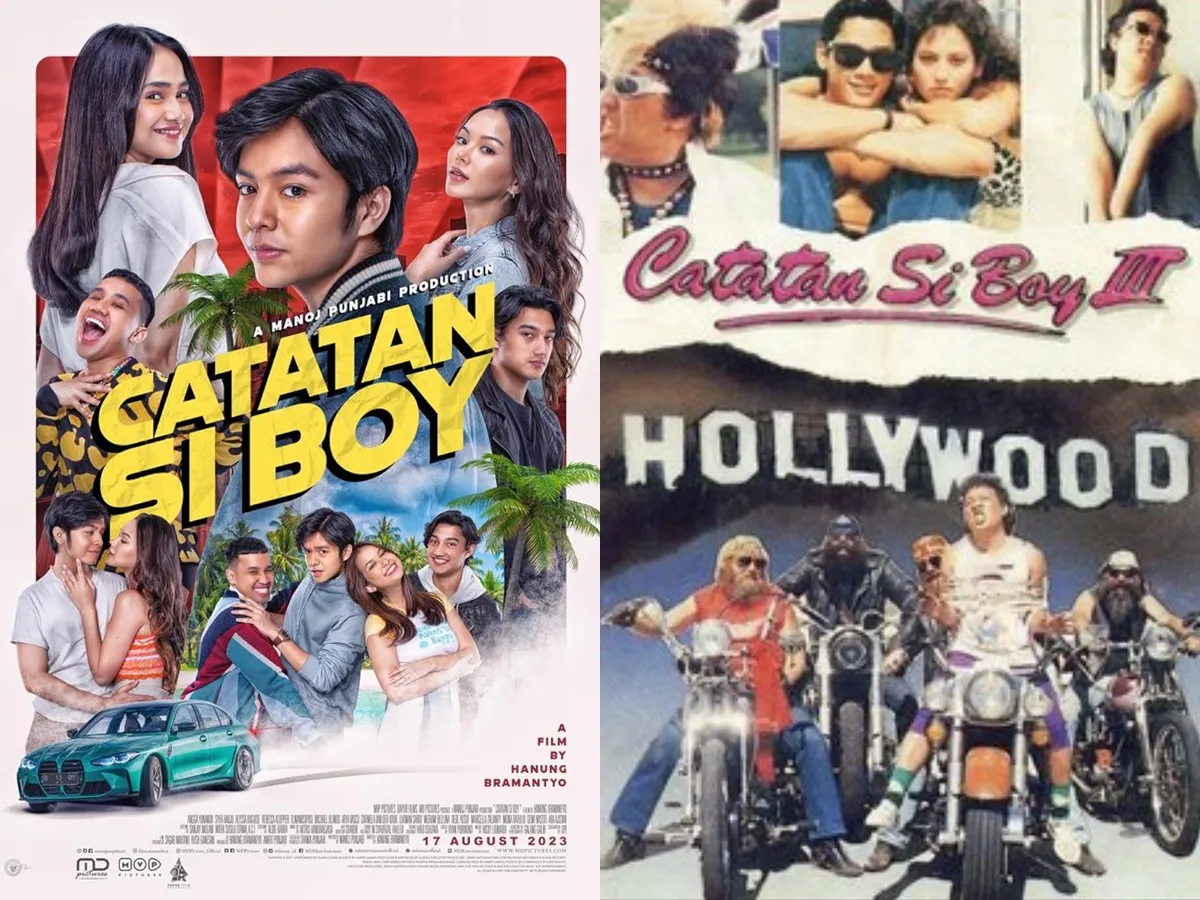
Indonesian Film Remake (Credit: IMDB)
CATATAN SI BOY is one of the iconic Indonesian teen films that has remained popular across generations. The original version released in 1987 and the remake that appeared in 2023 feature the same character — Boy, a handsome young man from a wealthy family — but both have different approaches in terms of story, casting, visual style, as well as commercial success and awards.
The 1987 version, directed by Nasri Cheppy, is an adaptation of a legendary radio drama and became a box office hit in its time. The story centers on Boy, an idealistic, polite, and charismatic young man from a well-off family who navigates the ups and downs of love and friendship, particularly with characters Nuke, Emon, and Andi.
This film emphasizes the emotional conflicts typical of 80s teenagers, set against the backdrop of urban Jakarta lifestyle and a moral touch about loyalty and responsibility. This version presents a calm drama, strong characters, and became a symbol of the established teenage lifestyle at that time.
Meanwhile, CATATAN SI BOY (2023) directed by Hanung Bramantyo attempts to reinterpret the character of Boy for the Gen Z generation. The story still revolves around Boy's love life and family dynamics but is packaged with a faster pace, a more glamorous vibe, and more modern visuals. The setting is expanded with elements of social media, digital interactions, and more explicit emotional dynamics. While still maintaining the core of the character, this version highlights a more complex family drama and more personal themes of identity.
In terms of cast, the 1987 version featured Didi Petet as Emon and Onky Alexander as Boy — an iconic and irreplaceable duo in the memories of Indonesian film fans. Their chemistry, especially Emon as Boy's flamboyant and humorous friend, is the main strength of this film.
Meanwhile, the 2023 version features Angga Yunanda as Boy, who brings a new charm with a modern acting style. Emon's role is played by Elmandsipasi, providing a softer interpretation while still maintaining the character's eccentric side. Other players like Alyssa Daguise and Syifa Hadju fill important roles, adding to the film's appeal for young audiences.
In terms of audience numbers, the 1987 version became one of the most successful teen films of the 80s, although audience data was not recorded officially like it is now. This film sparked sequels up to five series and gave birth to a pop culture icon.
In contrast, CATATAN SI BOY (2023) attracted around 300 thousand viewers, a fairly moderate number for a remake, but not classified as a major box office hit in today's era.
In terms of awards, the 1987 film received more cultural recognition and became an important part of the history of Indonesian teen films. Although it did not dominate film festivals, its legacy is very strong and persists to this day. The 2023 version has yet to record significant achievements in national film award events.
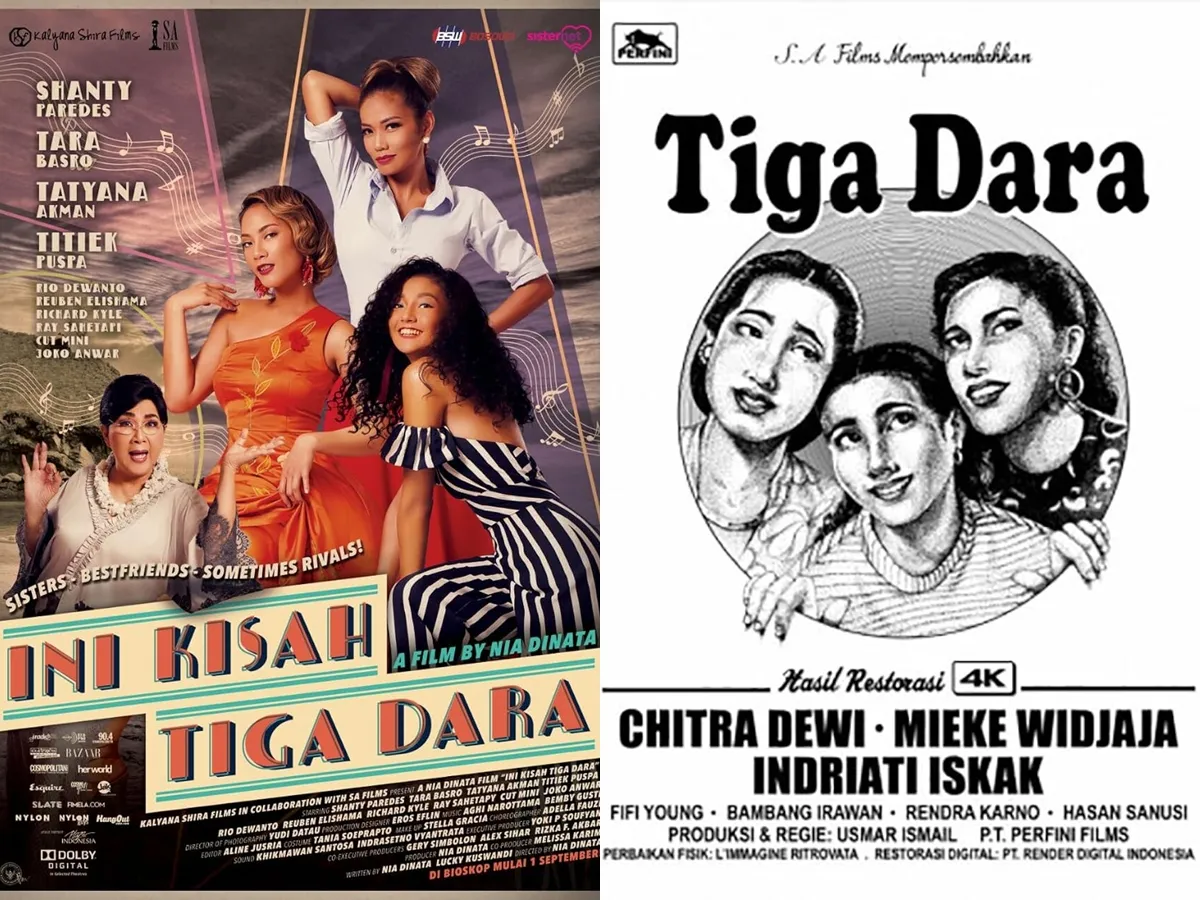
Indonesian Film Remake (Credit: IMDB)
The film TIGA DARA (1957) and INI KISAH TIGA DARA (2016) both raise themes of women and family dynamics, but they come from two different eras and very different cinematic approaches. Both are rooted in the spirit of women facing love, family, and social expectations, but packaged in a style that fits the context of their respective times.
TIGA DARA (1957) is a legendary musical film directed by Usmar Ismail, one of the pioneers of Indonesian cinema. This film tells the story of three sisters — Nunung, Nenny, and Nana — who live with their father and grandmother.
The focus of the story is on Nunung, the eldest who is pressured to marry soon, even though she has not yet found her true love. The story is light, warm, and filled with songs that depict the anxieties of young women of that time within the framework of a traditional family.
The main cast includes Chitra Dewi (Nunung), Mieke Wijaya, and Indriati Iskak, who later became icons of classic Indonesian cinema. The film received very positive responses and was screened at various international festivals, even being restored in 2015 for a re-release with better visual quality.
INI KISAH TIGA DARA (2016), directed by Nia Dinata, is a modern reinterpretation with a feminist spirit and more contemporary visuals. The story follows three sisters — Gendis, Ella, and Bebe — who live in Maumere, East Nusa Tenggara, with their grandmother after their mother passes away.
The three of them face different pressures related to love, self-identity, and family expectations, with the main focus on Gendis, who feels uncomfortable with the pressure to marry soon.
This film maintains a musical feel, but with new songs that are fresher and rich in Eastern Indonesian nuances. The main cast includes Shanty, Tara Basro, and Tatyana Akman, supported by Titiek Puspa as the grandmother.
In terms of storytelling, TIGA DARA (1957) is a subtle critique of social pressures on women in a patriarchal society, wrapped in sweet comedy and musical elements. THIS IS THE STORY OF THREE MAIDS (2016) carries the same spirit, but with a more open approach to emotions, internal conflicts, and a more diverse representation of women — including characters with different sexual orientations and more complex love dynamics.
In terms of audience acquisition, THREE MAIDS (1957) was one of the most popular films of its time, although there is no official data on audience numbers like there is today. It became a cultural phenomenon and was frequently shown in various cinemas in Indonesia during that era. THIS IS THE STORY OF THREE MAIDS (2016) attracted around 125 thousand viewers, which is not a large number, but sufficient for a musical film with a relatively limited market.
(kpl/tdr)
Cobain For You Page (FYP) Yang kamu suka ada di sini,
lihat isinya
Nassar is asking for prayers so that next year he can propose to his beloved. When asked if that is Lala, Nassar said this..
Come see how cute it is when Ussy Sulistiawaty takes her three kids to eat at a warteg!
Latest post on Billy Syahputra's Instagram caught attention. In that post, Billy Syahputra shows a portrait of his wife, Vika Kolesnaya in BTS prewedding some time ago. What does the portrait look like?
Not in a fancy restaurant, Helmy instead invited Park to enjoy chicken soto at a street food stall. Even so, this moment felt warm and fun. Curious, what does the moment look like?
Ria Ricis shared a series of portraits while attending the gala premiere of the film ASSALAMUALAIKUM BEIJING 2: LOST IN NINGXIA held on June 10, 2025. Here are the portraits, KLovers.
Afgan was unexpectedly tested by the accompanying ustaz while performing the Hajj pilgrimage. For more details, check here KLovers.
Rahmet Ababil recently made a short video expressing his hope for an animation film about the Indonesian National Team following the defeat of the Garuda squad. For more details, check here KLovers.
The moment Anang Hermansyah cleans his ears in China shows a funny expression as he has to hold back laughter. Curious about what the photos look like? Let's take a look at some of them below.
This is Yuki Kato's response when asked about aging; she prefers to embrace this rather than think negatively.
This is the moment Jennifer Coppen admitted she is in Japan to watch the Indonesian national team match, but who is it for?
Curious about Maudy Ayunda's explanation of the meaning of the song Moon, Take Me Home? Just read the following review to find out.
Curious about the reasons behind Maudy Ayunda's love for learning? Check out the following review to find out.